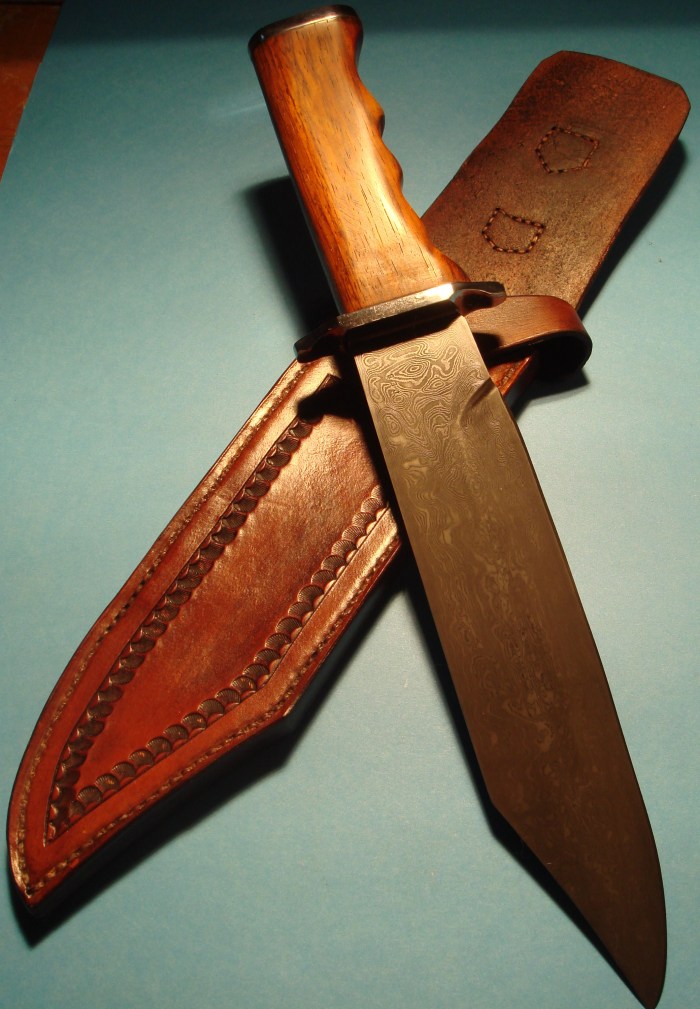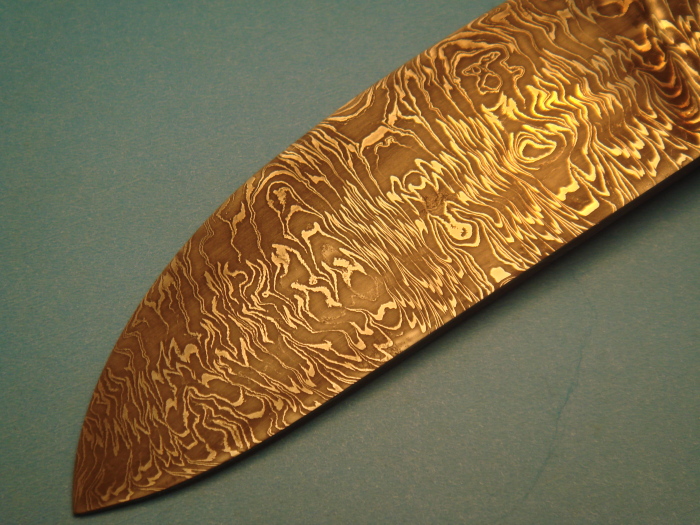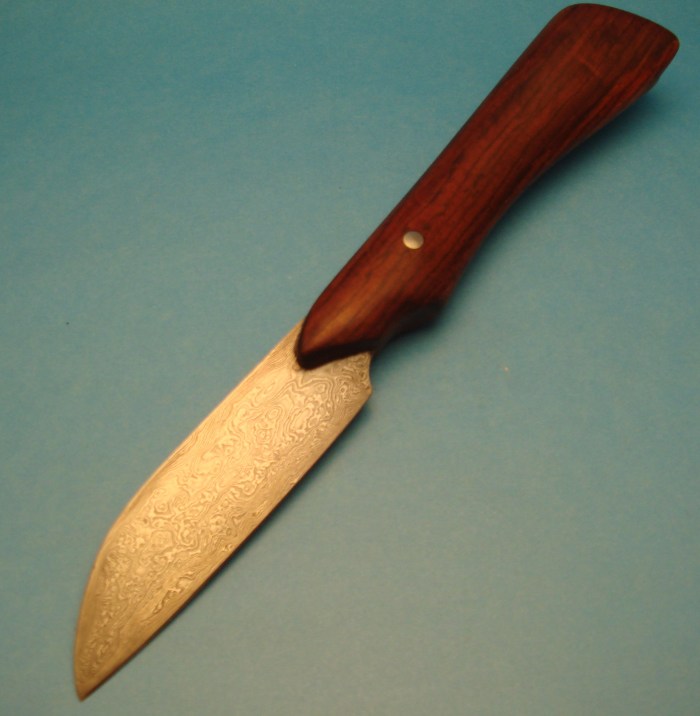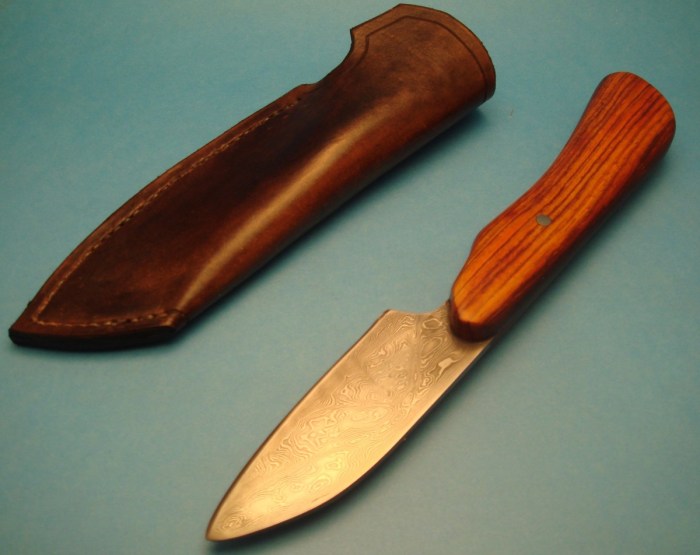Drop Tip Maple Hunter
 Monday, December 3, 2012 at 12:23PM
Monday, December 3, 2012 at 12:23PM 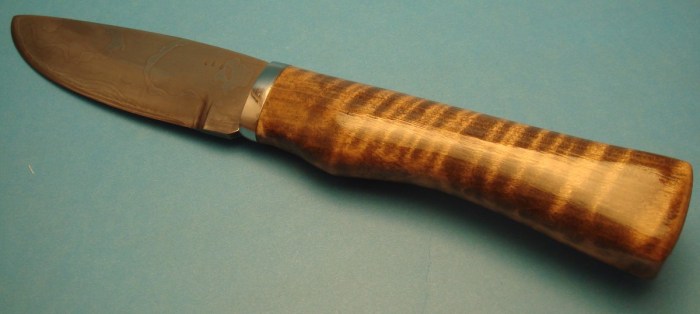
There was a fair amount of experimenting going on for this blade. A friend was over helping with the forge welding and we ran out of time for multiple heats, so I decided to try making the blade with a 9 layer count to see what would result. The pattern is VERY course, and the hardness line is quite visible. It was tricky to buff the bright lines without also buffing some of the dark steel as well. I was very happy with the blade shape itself, just the right amount of drop for the point. The curly maple handle was also new for me - it makes a beautiful handle, but it is challenging to get the shaping and polishing done at the interface with the guard. If the guard is pre-polished, then you risk scratches while finishing the handle, and if you are removing scratches from the guard, you risk staining the light maple with buffing compound. Judicious use of painters tape to try and keep the two areas separate during work seemed to be the best approach. All in all, some interesting results!
 Dave Seidle | Comments Off |
Dave Seidle | Comments Off | 